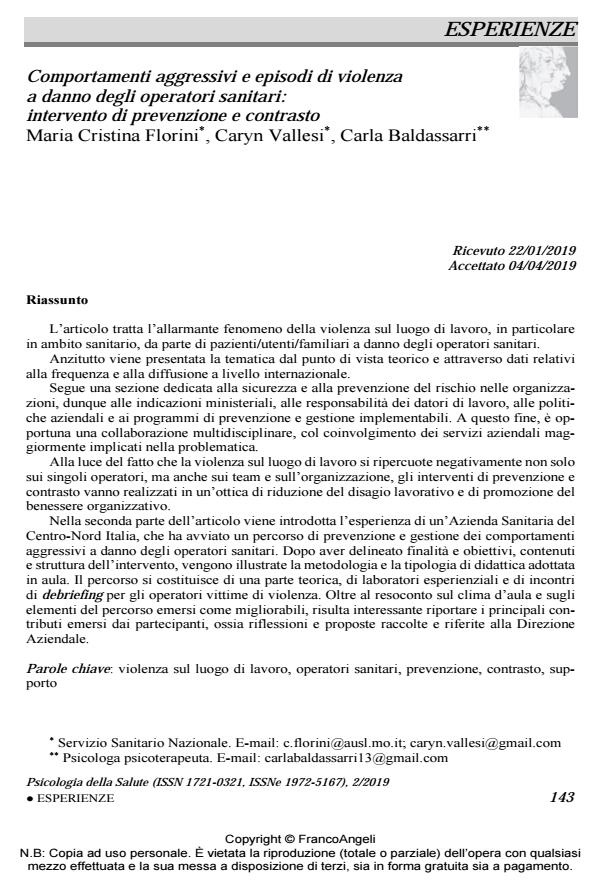Aggressive behaviours and violence events towards health workers: prevention and opposi-tion program
Journal title PSICOLOGIA DELLA SALUTE
Author/s Maria Cristina Florini, Caryn Vallesi, Carla Baldassarri
Publishing Year 2019 Issue 2019/2
Language Italian Pages 17 P. 143-159 File size 284 KB
DOI 10.3280/PDS2019-002007
DOI is like a bar code for intellectual property: to have more infomation
click here
Below, you can see the article first page
If you want to buy this article in PDF format, you can do it, following the instructions to buy download credits

FrancoAngeli is member of Publishers International Linking Association, Inc (PILA), a not-for-profit association which run the CrossRef service enabling links to and from online scholarly content.
The article deals with the worrying phenomenon of workplace violence, particularly in health environments, from patients/users/relatives towards health workers. First of all the theme is introduced from the theoretical point of view and through infor-mation about frequency and international spread. Then there is a section about safety and prevention of risks in organizations, therefore ministerial recommendations, employers’ responsibilities, companies’ policies and programs of prevention and management of workplace violence. For this purpose, it’s necessary to es-tablish a multidisciplinary collaboration, with participation of companies’ departments mainly involved in the problem. Since workplace violence has a bad effect not only on single workers, but also on teams and organization, prevention and opposition programs have to be carried out in order to com-bat the discomfort at work and to promote the organizational well-being. The second part of the article introduces the experience of a Health-Care Company in the Center-North of Italy, that started a program of prevention and management of aggressive be-haviours towards health workers. There is the presentation of purposes and objectives, con-tents and structure of the program, methodology and teaching techniques that were implement-ed. The program is composed of a theoretical part, some active workshops and debriefing meetings for health workers victims of workplace violence. Besides the report about partici-pants’ mood and elements of the program that should be improved, it’s interesting to illustrate the main observations and suggestions of participants, gathered and reported to the Compa-ny’s Direction.
Keywords: Workplace violence, health workers, prevention, opposition, help
Maria Cristina Florini, Caryn Vallesi, Carla Baldassarri, Comportamenti aggressivi e episodi di violenza a danno degli operatori sanitari: intervento di prevenzione e contrasto in "PSICOLOGIA DELLA SALUTE" 2/2019, pp 143-159, DOI: 10.3280/PDS2019-002007